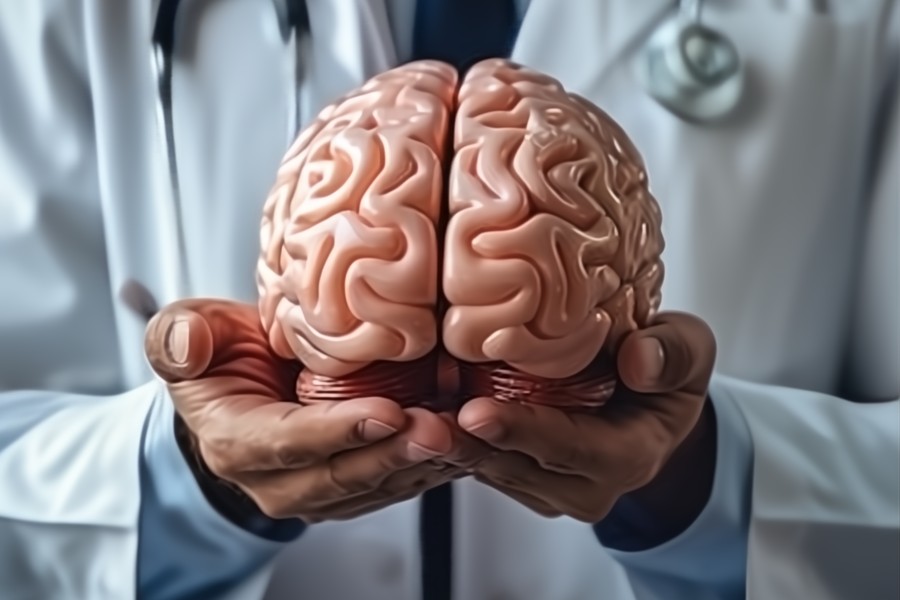 By Batista Gremaud
By Batista Gremaud
Neuroscience is the study of the brain, the spinal cord, how the nervous system develops, its structure, what it does, and its impact on behavior and cognitive functions.
The neuroscience of physical, mental, and spiritual health is very dear to my heart because of my family’s history of mental illness.
My family practiced healthy living; we lived on a farm, and ate fresh vegetables we grew in our garden. We were dancers, athletes, health-conscious, spiritual.
So…what went wrong?
My sister was diagnosed with schizophrenia at age 20. She just passed away last Christmas, having spent her entire life in mental institutions. My brother suffered brain damage when he was 5 months old.
He is still in a mental institution today at 64 years old. My mother suffered from religious psychosis and was hospitalized on many occasions.
My father couldn’t take it anymore. When I was 10 years old, he jumped out a second-story window, broke all his bones, and ended up in the psych ward. Consequently, he was on medication for the rest of his life and passed away from dementia in 2009.
As a teenager, I was confused and baffled by all these dysfunctional behaviors; I didn’t want to be like them, I left home at age 15. And so began my conquest of searching for answers throughout my entire life. Here are some of my findings:
The brain can regenerate itself with the right activities, mindsets, and nutrition. It is what we know as neuroplasticity.
The benefits of mindset and nutrition for brain health are widespread, but not so much when it relates to exercise. Research shows that exercise induces neuroplasticity. It increases oxygen in the brain by opening new pathways internally.
The benefits of mindset and nutrition for brain health are widespread, but not so much when it relates to exercise. Research shows that exercise induces neuroplasticity. It increases oxygen in the brain by opening new pathways internally.
It stimulates the development of blood vessels in the brain, improves healing of neural tissue, creates new neurons in memory formation areas of the brain, and stimulates cellular growth that supports cognitive function.
It stabilizes mood behavior by augmenting the production of mood-elevating neurochemicals such as dopamine and endorphins.
Other studies indicate that it helps in addiction recovery and potentially tempering impulsive/compulsive behaviors because it also increases the production of serotonin.
The nervous system connects every cell in the body to the brain through the spine. It controls every cell, tissue, and organ, as well as emotions, feelings, and thoughts.
The brain is like the electrical panel in your home, the nerves are like the wiring, and the spinal cord the conduit.

When your nervous system is stressed out, you are prone to
- Overthinking
- Poor diet
Doing strenuous exercises counterproductive to where your body is at by not factoring in your age, posture, conditioning, limitation of range of motion, injuries or the right fitness tool to physically strengthen the body.
The chances are that your nervousness will blow a fuse, potentially resulting in injury, illness, depression, anxiety, and/or addictions.
If the conduit is damaged, the electricity will not reach the control box. Similarly, if the spine is misaligned, it affects the nerve tissue by altering blood flow to the spinal cord and impairs the neurochemicals’ delivery to the brain.
Bad posture prematurely ages the spine, joints, tendons, and ligaments and results in injuries such as sciatica, frozen shoulder, knee pain, hip pain, and back pain.
Clearing the neuromuscular pathways to the brain through postural realignment exercises is imperative to restore blood flow to the brain and prevent early degeneration of the spine.
While exercise, in general, has proven to be an essential component of neuroplasticity and brain health, research shows that strength training explicitly provides additional health benefits.
While exercise, in general, has proven to be an essential component of neuroplasticity and brain health, research shows that strength training explicitly provides additional health benefits.
A study published by the International Journal of Experimental, Clinical, Behavioral and Technological Gerontology (Karger) shows that increasing leg strength, the most massive muscles in the body, is linked to improved brain function because it improves the flow of blood into the brain.
The study also shows that increasing leg power improved cognitive aging over the following ten years by increasing brain volume and brain activation, as shown in functional MRI studies after 12 years.
The study also shows that increasing leg power improved cognitive aging over the following ten years by increasing brain volume and brain activation, as shown in functional MRI studies after 12 years.
Grounding the physical body and strengthening it through exercises that strengthen the nervous system is like upgrading the electrical panel wiring of your house, providing a sense of calm, relieving stress, and restoring a state of balance in the body.
I leave you with a question: Could strength training be the answer to the fountain of youth?
Through postural realignment, exercises is imperative to restore blood flow to the brain and prevent early degeneration of the spine.
While exercise, in general, has proven to be an essential component of neuroplasticity and brain health, research shows that strength training explicitly provides additional health benefits.
While exercise, in general, has proven to be an essential component of neuroplasticity and brain health, research shows that strength training explicitly provides additional health benefits.
Batista Gremaud, author of Feminine Body Design: Empowering Fitness for Pain-free Life is co-founder of www.DrFitnessInt.com, 424.245.6560.
Photo credit: 1) Health image HWM. 2) By Anna Shvets from Pexels. Via clarissaburt.com
Become a Harlem Insider!
By submitting this form, you are consenting to receive marketing emails from: . You can revoke your consent to receive emails at any time by using the SafeUnsubscribe® link, found at the bottom of every email. Emails are serviced by Constant Contact








